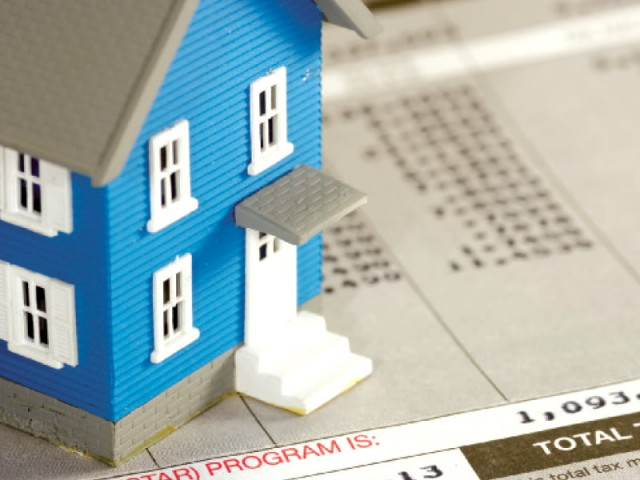Home ownership: Builders suggest subsidised house financing, stricter laws
Pakistan’s mortgage-to-GDP ratio is lowest in the region.

The total stock of outstanding housing finance on March 31 of all banks and development finance institutions was Rs52.6 billion. PHOTO: FILE
The government should introduce stricter foreclosure laws besides providing low-income people with avenues for subsidised financing in order to increase home ownership in Pakistan, Association of Builders and Developers of Pakistan (ABAD) Senior Vice Chairman Saleem Kassim Patel said on Wednesday.
Speaking to The Express Tribune in an interview, Patel said Pakistan’s mortgage to gross domestic product (GDP) ratio is on the decline although it is already the lowest among comparable economies in the region.
Mortgage-to-GDP ratio was only 0.6% at the end of first quarter of 2013, according to the housing finance review of the State Bank of Pakistan (SBP).
As a representative of ABAD, Patel serves on the working group on house financing and fiscal incentives, which is part of the steering committee set up by the prime minister to promote low-cost housing in the country.

Commenting on the role of House Building Finance Company (HBFC), Patel said it needs to revitalise its efforts to recover outstanding loans. “A will to recover on the part of HBFC is crucial. It shouldn’t let people off the hook easily if they are financially sound,” he said.
HBFC’s non-performing loans (NPLs) amounted to Rs7.4 billion at the end of March 2013. Out of the total housing NPLs of Rs18.3 billion at the time, the share of HBFC’s NPLs alone was over 40%. Almost 59% of HBFC’s outstanding loans constitute NPLs, according to the SBP.
The total stock of outstanding housing finance on March 31 of all banks and development finance institutions was Rs52.6 billion. Of this amount, commercial banks accounted for Rs39.8 billion, private banks Rs23 billion, Islamic banks Rs9.6 billion, public-sector banks Rs6.9 billion, foreign banks Rs0.3 billion and HBFC Rs12.6 billion.
“Housing finance is long-term in nature. The government needs to modify regulations in a way that loans are not quickly classified as NPLs. We need better regulations for long-term home financing,” Patel said.
Excluding HBFC, NPLs of all banks and DFIs have shown a decline of 10.1% between March 2012 and March 2013, as they stood at Rs11 billion at the end of the first quarter of 2013 as opposed to Rs12.2 billion on March 31, 2012.
As per a World Bank study carried out in 2009, there is a backlog of 7.5 million housing units in Pakistan, which is increasing by 350,000 units every year.
“Total number of borrowers who receive fresh housing loan disbursements in a typical quarter is astonishingly low,” Patel noted.
Only 505 borrowers received fresh disbursements amounting to Rs2.3 billion during the first quarter of 2013. SBP data reveals that Islamic banks extended new disbursements of Rs1.3 billion followed by private banks with Rs547 million, public-sector banks Rs58 million, foreign banks Rs4 million and HBFC Rs292 million.
Among commercial banks, the number of new borrowers totalled 310, private banks 115, Islamic banks 154 and HBFC disbursed loans to 195 new borrowers.
“These figures are abysmal in view of the huge backlog of housing units in Pakistan,” he added.
Published in The Express Tribune, October 31st, 2013.
Like Business on Facebook, follow @TribuneBiz on Twitter to stay informed and join in the conversation.


















COMMENTS
Comments are moderated and generally will be posted if they are on-topic and not abusive.
For more information, please see our Comments FAQ